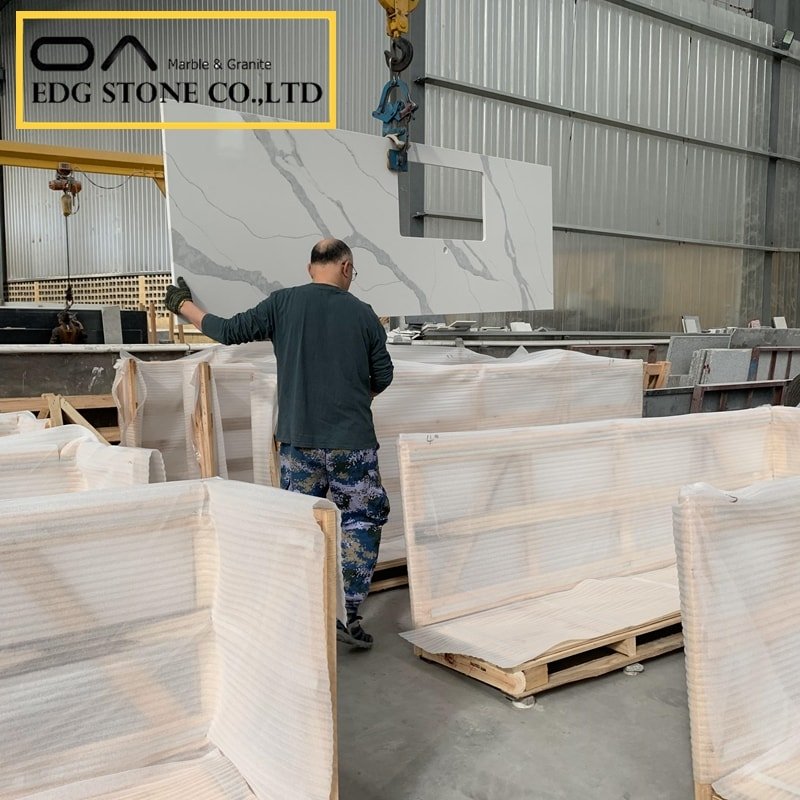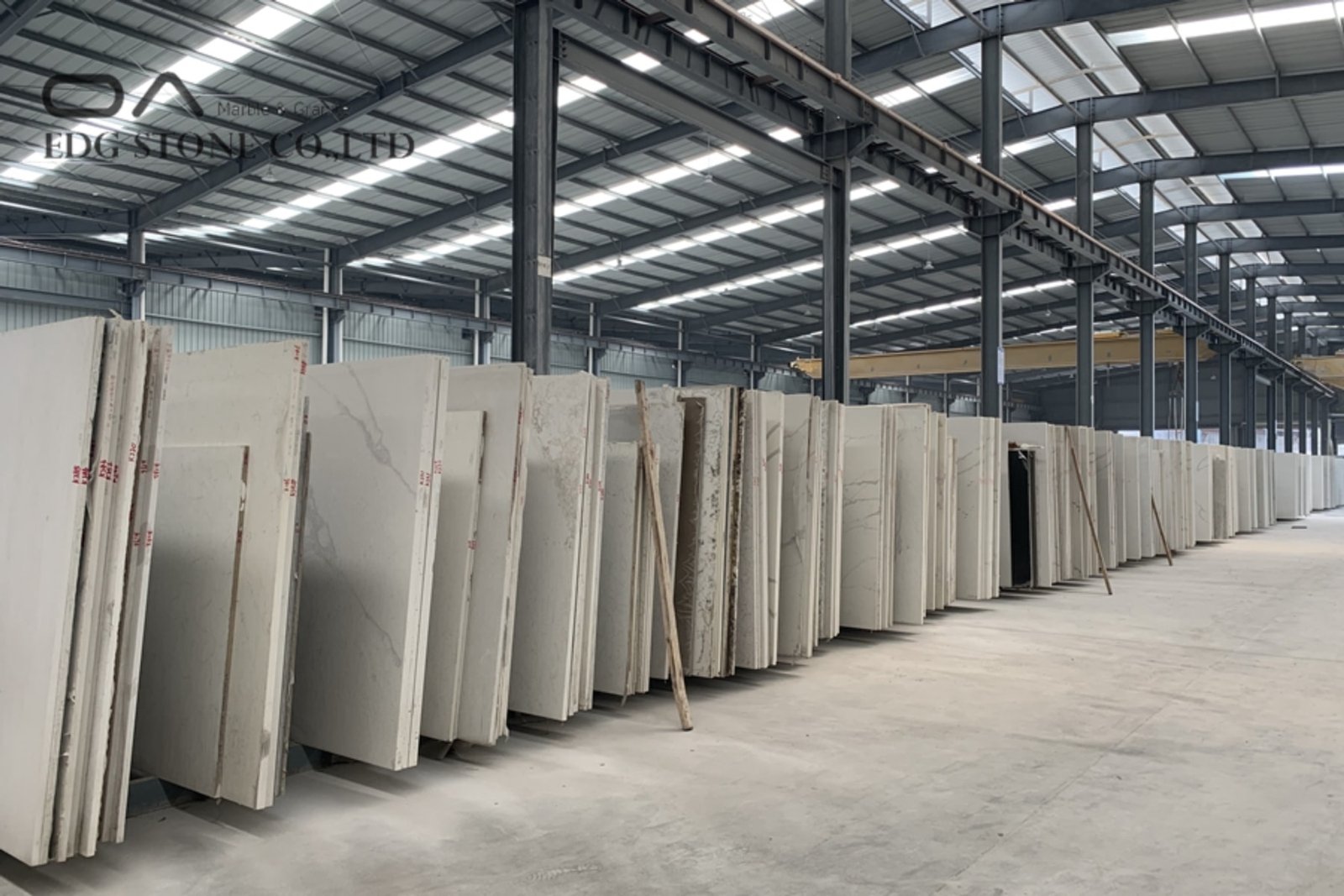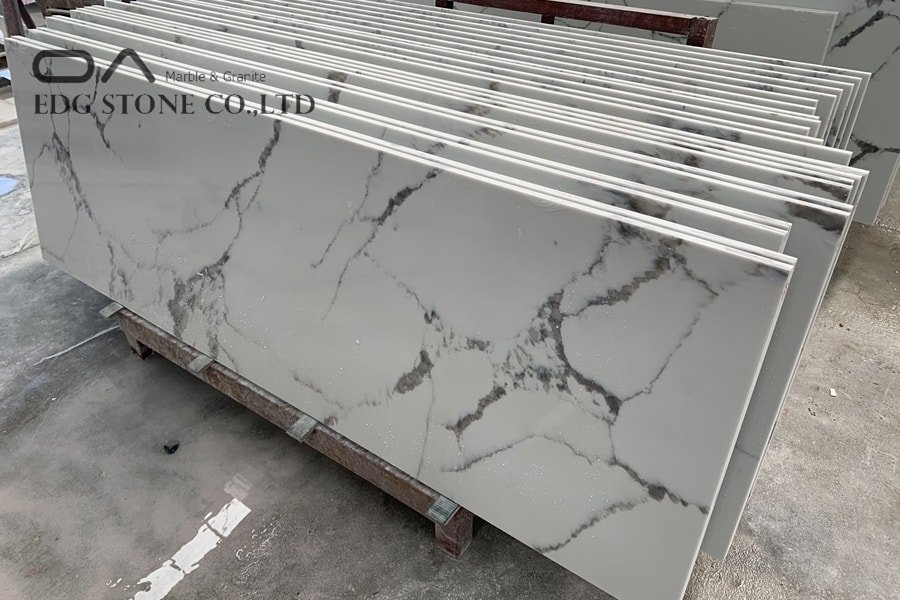Quartz stone is a new type of stone made of 92% quartz sand powder as the main aggregate, 8% resin, pigment, and other auxiliary materials as the main binding material. After mixing, it is made by vacuum pressure vibration molding, curing, and polishing.
Due to its high density and high hardness, quartz stone has excellent scratch resistance and stain resistance. It is not scratched, impermeable, stain-resistant, corrosion-resistant, high temperature resistant, environmentally friendly, and can be in direct contact with food.
However, from a physics point of view, quartzite has slight thermal expansion and contraction and has certain mechanical properties such as shrinkage stress, impact toughness, and elongation at break. When the material cannot withstand the internal stress brought by thermal expansion and contraction And cracking occurs when subjected to severe external impact.
Quartz stone table cracking and its causes
1. Cracking in the central part of the tabletop, etc.: subject to high temperature, external force impact, uneven cabinet or backing plate, internal damage to the plate, etc.;
2. Cracking at the corner: too tight against the wall without shrinkage joints, uneven or uneven padding between the two cabinets, cracking due to external force impact or uneven shrinkage of the table surface;
3. Cracking around the countertop basin: There is no gap between the countertop basin and the basin hole, the basin hole is not polished and smooth, cracked due to external force impact or uneven temperature shrinkage of the countertop;
4. Cracking around the furnace hole: there is no gap between the gas stove and the furnace hole, the furnace hole is not polished smoothly, the surface is cracked due to external impact or uneven shrinkage of the table;
5. Cracks in the rear water blocking: the cabinet is not flat or the pad is not flat;
6. The cracks on the connecting surface of the rear water-retaining edge: the glue does not stick well;
7. Cracking at the splicing seam of the countertop: when the installer is seaming, the seam is not aligned, the glue is not evenly coated, or the curing is added in the glue or the excess is promoted to make the seam more brittle. The crack will be cracked by a slight impact during use.
In order to ensure the quality of the installation of the table, before installation, you need to pay attention to the following points:
1. When designing the plane splicing, the physical properties of the quartz stone should be taken into consideration to avoid the consequences of joint cracking caused by thermal expansion and contraction or stress concentration. When selecting the connection position, the stress of the plate must be fully considered. Avoid connecting at corners or furnace mouth.
2. When designing the corner of the table, the stress concentration should be fully considered to cause cracking at the corner of the table, so all corners should be kept at a radius of 25mm or more during processing.
3. When designing the opening position, the opening position should be greater than or equal to 80mm from the edge of the tabletop to prevent cracking of the hole position. The corner of the opening should be kept at a radius of 25mm or more.
4. When the table is installed, there should be a 2-4mm expansion gap between the table and the wall to effectively ensure that the table does not crack due to thermal expansion and contraction. The table should be kept at a maximum distance of no more than 600 mm from the support frame or support plate to reduce table deformation or even fracture
5. In the daily use process, it is also necessary to avoid cracking caused by external factors, such as: do not gravity hit the quartz stone countertop, do not directly touch extremely high-temperature pots or utensils on the countertop, etc., you can pad a layer of heat insulation.








